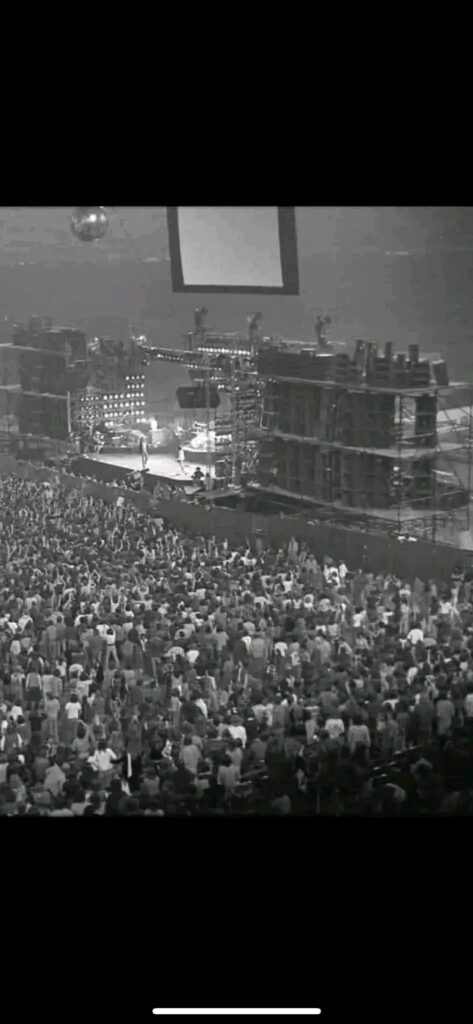Led Zeppelin were known for their explosive live shows, with massive stacks of Marshall amplifiers. They created an ear-splitting onslaught of sound that left a lasting impact……
Sure! Here’s an 800-word news-style article based on your prompt, celebrating Led Zeppelin’s legendary live shows and the sonic power they unleashed:
BREAKING: Led Zeppelin’s Live Legacy – How Four Men and a Wall of Marshalls Changed Rock Forever
April 21, 2025 – Decades have passed since their final full-scale tour, but the live legacy of Led Zeppelin still echoes like thunder in the history of rock ‘n’ roll. Known for explosive performances, face-melting guitar solos, and walls of towering Marshall amplifiers, Zeppelin’s live shows weren’t just concerts—they were sonic assaults that left an indelible mark on music, fans, and even modern stage design.
Led Zeppelin didn’t just play loud—they redefined what loud could be.
From the very beginning, the band—Robert Plant, Jimmy Page, John Paul Jones, and John Bonham—pushed the boundaries of live sound. Drawing on blues, psychedelia, hard rock, and mysticism, they created massive, multi-sensory performances that were far ahead of their time. It wasn’t just about volume. It was about presence, power, and precision—a sound so colossal it felt like the Earth might split beneath your feet.
At the heart of this sonic spectacle were the towering stacks of Marshall amplifiers. Guitarist Jimmy Page, always one to chase the perfect tone, used Marshalls not only for their raw power but also for their warm, distorted crunch that defined the Zeppelin sound. Combined with his Gibson Les Paul and iconic violin bow solos, Page conjured layers of sound that seemed impossible for a single guitarist to achieve.
“We weren’t just turning it up to eleven,” Page famously joked. “We were trying to shake the sky.”
The band’s setup often included multiple full stacks of amps, expertly mic’d and managed by their pioneering live sound crew. In an era before digital mixing or advanced PA systems, Led Zeppelin were among the first to treat sound engineering as an art form, helping usher in the age of arena rock.
The result? Shows that were not only ear-splittingly loud but also emotionally immersive.
In a time when most rock bands played 90-minute sets, Zeppelin often went well over three hours, with improvisational versions of songs that blurred the line between concert and ritual. A typical performance of “Dazed and Confused” could stretch past 30 minutes, complete with eerie, echoing bow solos and cascading waves of distortion. “Whole Lotta Love” became a wild, psychedelic freak-out with each show offering a new twist.
And then there was Bonham—the thunder behind the storm. His sheer force behind the drum kit, powered by 26-inch bass drums and bludgeoning right foot, created a foundation of seismic energy that few drummers have matched. On tracks like “Moby Dick,” Bonham would unleash a 10-minute solo that blended technique, rhythm, and pure fury, often ending with him using his bare hands.
Robert Plant’s voice, meanwhile, was an instrument all its own. Capable of switching from a haunting whisper to a primal scream in seconds, Plant’s vocals soared above the chaos, leading the charge with an almost shamanic presence. He wasn’t just singing—he was casting spells.
And let’s not forget John Paul Jones, the band’s secret weapon. Whether anchoring songs with his bass lines, adding atmosphere on the Mellotron, or ripping through an organ solo on “No Quarter,” Jones provided a musical sophistication that elevated Zeppelin’s live shows far beyond the average rock performance.
Together, these four musicians created a new standard for what a live rock show could be. From Madison Square Garden to Earl’s Court, from the L.A. Forum to their iconic 1973 U.S. tour, Zeppelin turned stages into temples of sound. Their concerts weren’t just events—they were experiences, whispered about for years by those lucky enough to attend.
Of course, not everyone was ready for Zeppelin’s intensity. In the early years, critics were often split—some called them overindulgent, while others dubbed them “the heaviest band in the world.” But for fans, there was never a question. Zeppelin wasn’t just loud. They were transformative.
A soundboard recording of a 1975 show in Long Beach recently surfaced online, giving new generations a taste of what it felt like to be in the room when Led Zeppelin hit full stride. Within hours, it trended globally, racking up millions of views and sparking a wave of renewed interest in live analog recording techniques.
It’s a reminder that in an era of auto-tune, pre-recorded tracks, and in-ear monitors, Led Zeppelin achieved transcendence using guts, gear, and godlike talent.
Today, their influence remains everywhere—from festival lineups to guitar tone tutorials on YouTube. Countless tribute acts and stadium bands owe a debt to Zeppelin’s live blueprint. Even modern stage production, from lighting rigs to sound design, has Zeppelin’s fingerprints all over it.
As the surviving members continue to honor the band’s history in their own ways—Plant through intimate folk projects, Page through remastering the archives—the legend of Zeppelin’s live shows continues to grow.
Because if you were there, you never forgot it.
And if you weren’t?
You’ll spend the rest of your life wishing you had been.

